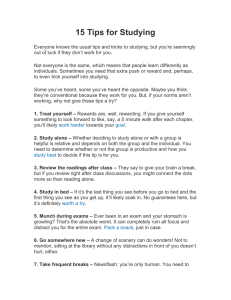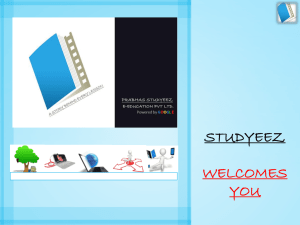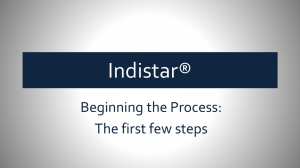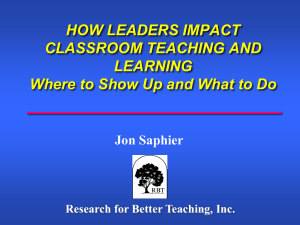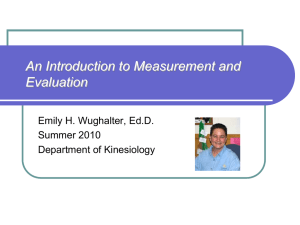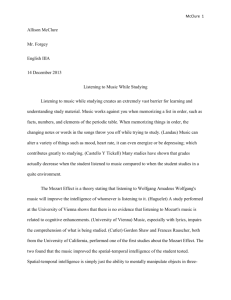How Do Students` Study? - University of Wisconsin
advertisement
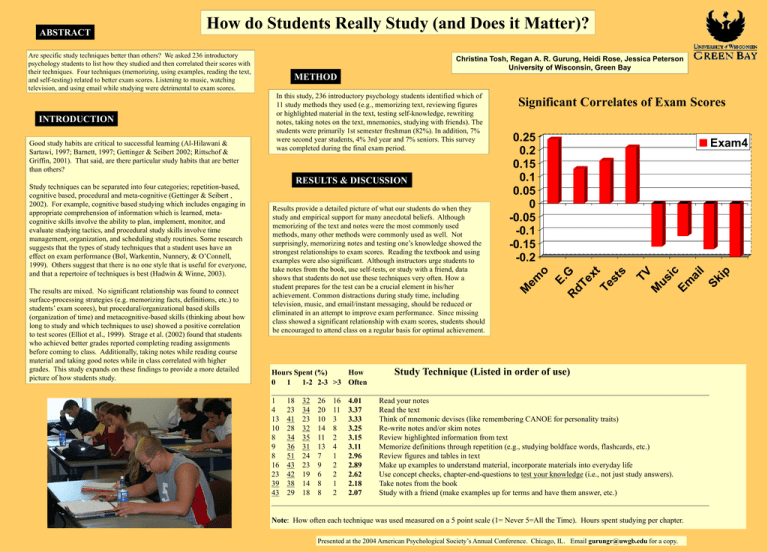
Exam4 us ic Em ai l Sk ip Results provide a detailed picture of what our students do when they study and empirical support for many anecdotal beliefs. Although memorizing of the text and notes were the most commonly used methods, many other methods were commonly used as well. Not surprisingly, memorizing notes and testing one’s knowledge showed the strongest relationships to exam scores. Reading the textbook and using examples were also significant. Although instructors urge students to take notes from the book, use self-tests, or study with a friend, data shows that students do not use these techniques very often. How a student prepares for the test can be a crucial element in his/her achievement. Common distractions during study time, including television, music, and email/instant messaging, should be reduced or eliminated in an attempt to improve exam performance. Since missing class showed a significant relationship with exam scores, students should be encouraged to attend class on a regular basis for optimal achievement. 0.25 0.2 0.15 0.1 0.05 0 -0.05 -0.1 -0.15 -0.2 M The results are mixed. No significant relationship was found to connect surface-processing strategies (e.g. memorizing facts, definitions, etc.) to students’ exam scores), but procedural/organizational based skills (organization of time) and metacognitive-based skills (thinking about how long to study and which techniques to use) showed a positive correlation to test scores (Elliot et al., 1999). Strage et al. (2002) found that students who achieved better grades reported completing reading assignments before coming to class. Additionally, taking notes while reading course material and taking good notes while in class correlated with higher grades. This study expands on these findings to provide a more detailed picture of how students study. RESULTS & DISCUSSION Significant Correlates of Exam Scores TV Study techniques can be separated into four categories; repetition-based, cognitive based, procedural and meta-cognitive (Gettinger & Seibert , 2002). For example, cognitive based studying which includes engaging in appropriate comprehension of information which is learned, metacognitive skills involve the ability to plan, implement, monitor, and evaluate studying tactics, and procedural study skills involve time management, organization, and scheduling study routines. Some research suggests that the types of study techniques that a student uses have an effect on exam performance (Bol, Warkentin, Nunnery, & O’Connell, 1999). Others suggest that there is no one style that is useful for everyone, and that a repertoire of techniques is best (Hadwin & Winne, 2003). In this study, 236 introductory psychology students identified which of 11 study methods they used (e.g., memorizing text, reviewing figures or highlighted material in the text, testing self-knowledge, rewriting notes, taking notes on the text, mnemonics, studying with friends). The students were primarily 1st semester freshman (82%). In addition, 7% were second year students, 4% 3rd year and 7% seniors. This survey was completed during the final exam period. E. G R dT ex t Te st s Good study habits are critical to successful learning (Al-Hilawani & Sartawi, 1997; Barnett, 1997; Gettinger & Seibert 2002; Rittschof & Griffin, 2001). That said, are there particular study habits that are better than others? METHOD o INTRODUCTION Christina Tosh, Regan A. R. Gurung, Heidi Rose, Jessica Peterson University of Wisconsin, Green Bay em Are specific study techniques better than others? We asked 236 introductory psychology students to list how they studied and then correlated their scores with their techniques. Four techniques (memorizing, using examples, reading the text, and self-testing) related to better exam scores. Listening to music, watching television, and using email while studying were detrimental to exam scores. M ABSTRACT How do Students Really Study (and Does it Matter)? Hours Spent (%) How Study Technique (Listed in order of use) 0 1 1-2 2-3 >3 Often __________________________________________________________________________________________________________________ 1 18 32 26 16 4.01 Read your notes 4 23 34 20 11 3.37 Read the text 13 41 23 10 3 3.33 Think of mnemonic devises (like remembering CANOE for personality traits) 10 28 32 14 8 3.25 Re-write notes and/or skim notes 8 34 35 11 2 3.15 Review highlighted information from text 9 36 31 13 4 3.11 Memorize definitions through repetition (e.g., studying boldface words, flashcards, etc.) 8 51 24 7 1 2.96 Review figures and tables in text 16 43 23 9 2 2.89 Make up examples to understand material, incorporate materials into everyday life 23 42 19 6 2 2.62 Use concept checks, chapter-end-questions to test your knowledge (i.e., not just study answers). 39 38 14 8 1 2.18 Take notes from the book 43 29 18 8 2 2.07 Study with a friend (make examples up for terms and have them answer, etc.) __________________________________________________________________________________________________________________ Note: How often each technique was used measured on a 5 point scale (1= Never 5=All the Time). Hours spent studying per chapter. Presented at the 2004 American Psychological Society’s Annual Conference. Chicago, IL. Email gurungr@uwgb.edu for a copy.
